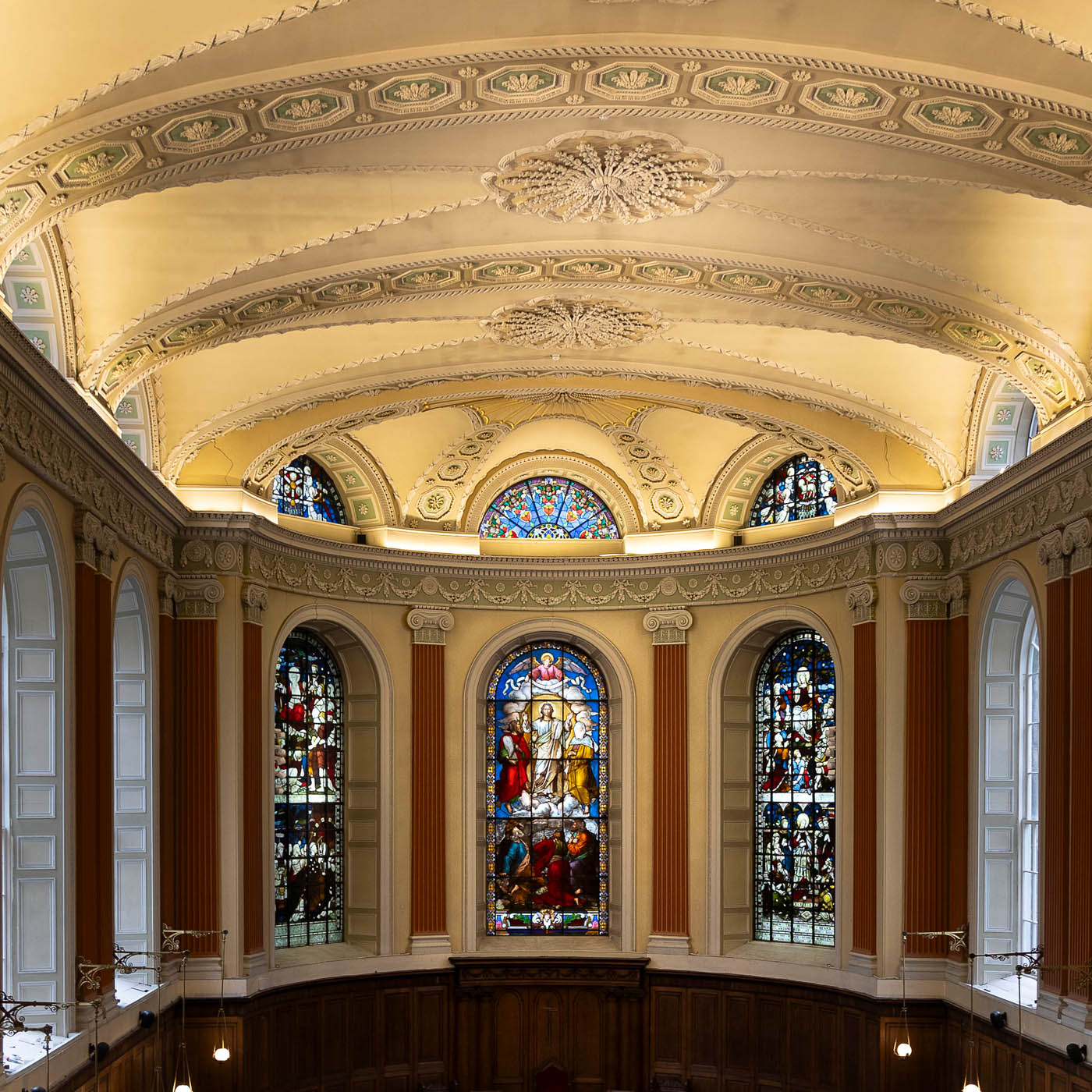The theme of the outing on Saturday 8th February was the architectural appreciation of several buildings in Trinity College. To assist in this, Paul O’Callaghan prepared and distributed a guide providing brief descriptions of fourteen notable buildings on the campus. At around 10:00 am, approximately 17 members assembled in Parliament Square. The outing was divided into two parts: initially, a visit to the interior of the adjacent College Chapel for about an hour, followed by a self-guided tour using Paul’s notes to explore areas and buildings of personal interest.
As Paul informed us, the chapel was completed in 1798 by Sir William Chambers. The entrance is framed by large Corinthian columns of Portland stone. Inside, the chapel is not large, featuring a spacious chancel and choir stalls on both sides.
The chapel presented many opportunities for photography, including the large stained glass windows over the altar, the intricate plasterwork in the vaulted ceiling, the majestic organ in the balcony, intimate shots of the altar, and overall images capturing the choir stalls. We were also allowed access to the balcony to take photographs from a higher vantage point, looking down into the main body of the church and altar. Other options included close-ups of the organ, a mini chapel at the back of the balcony, and images of the staircase that provided access.
At around 11:15 am, we split up to explore and photograph other features within the campus, agreeing to meet up in Costa Coffee at midday. This photographer chose to capture images of the Rubrics, the old red-bricked Civil Engineering Building (from the 1800s), and the “Apples and Atoms” sculpture by Eilís O’Connell RHA, which celebrates the work of Ernest T.S. Walton (1903–1995), a Nobel Laureate.
By then, the drizzle that had been threatening all morning began to establish itself, and it was time for coffee. Overall, it was another successful outing, with much positive commentary on the group’s WhatsApp.
Some images (click on an image to open in full-screen mode) from the outing can be seen below:

